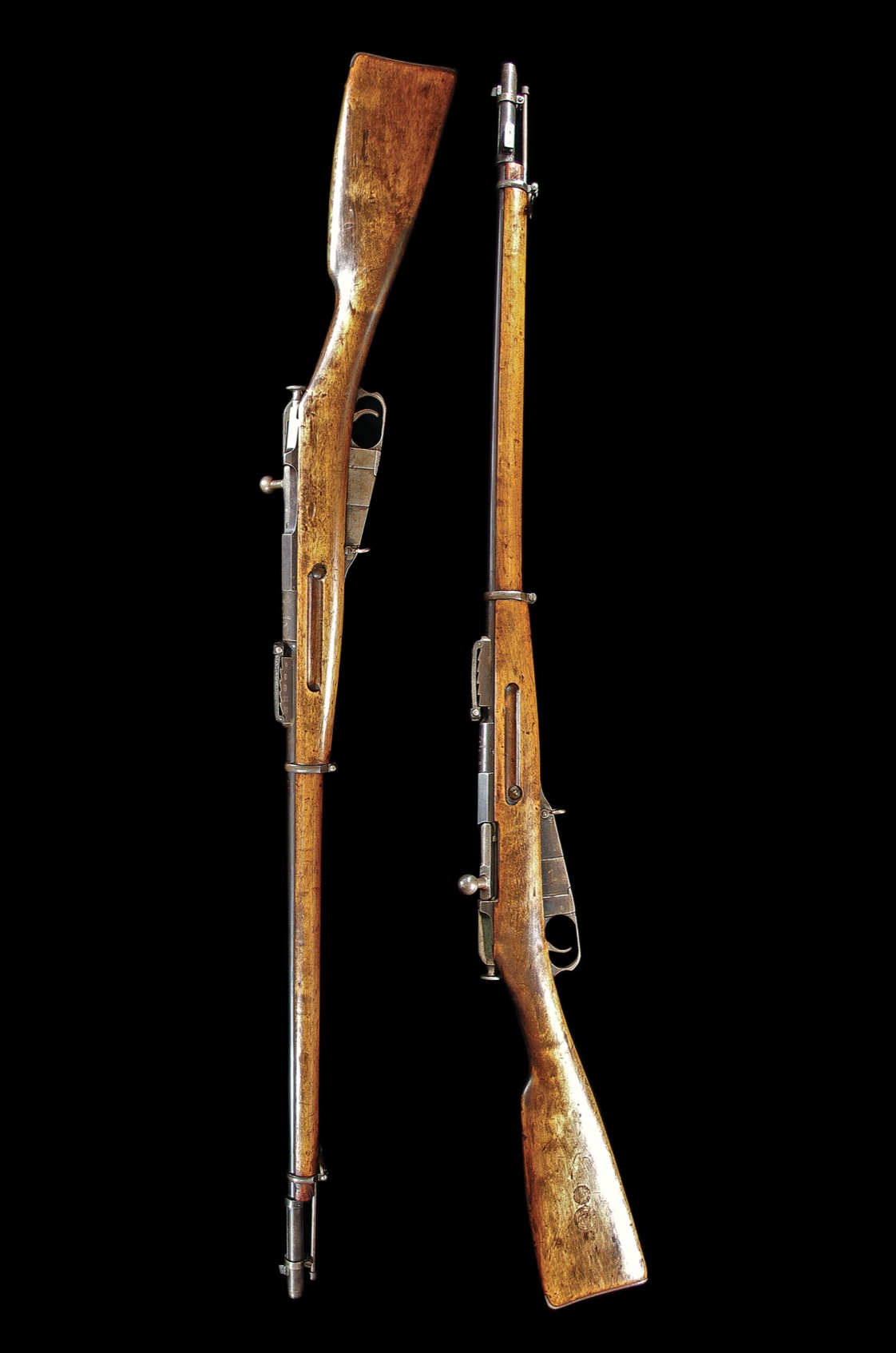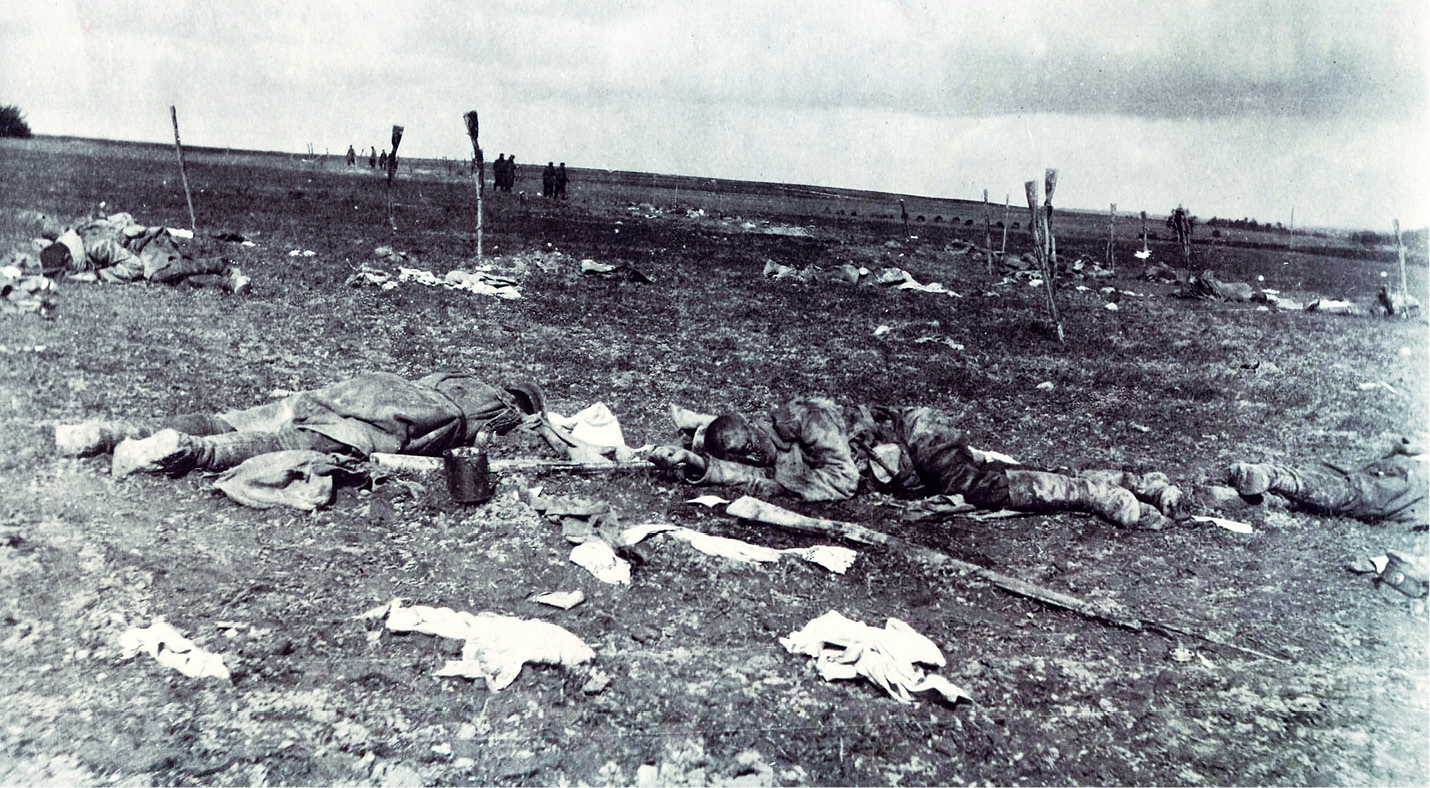27
Mosin-Nagant rifle, Tannenberg

THE MOSIN-NAGANT rifle has become a significant component of the iconography of the Great War. Images of the massed ranks of the czar’s armies standing bolt upright with the rifle upon their shoulders are common, representative of the great mass of men mobilized to form the “Russian steamroller” so feared by the Germans and admired by the Allies.
At the outbreak of the war, Czar Nicholas II appointed his cousin, Grand Duke Nicholas, as commander in chief. On mobilization, the Russian Army could boast some 15.8 million men in uniform—two-fifths of the male population of service age—and supported some 115 infantry and 38 cavalry divisions. A combined total of some 78 infantry and 29 cavalry divisions faced the Central Powers of Germany and Austria-Hungary.
No other nation would mobilize as many men in prosecution of the war. But all was not well. Ensuring that this impressive number of men each had a rifle and bayonet was a significant challenge to the Russians, whose economy was not capable of gearing up to maximum war effort. While Russia headed the tables in the supply of men, it was very much at the bottom when it came to military expenditure. While Russia expended some $1.8 billion per year on the supply of its military during the Great War, Germany, Britain and even the United States were to spend at least twice as much on their military consumables during the war. This deficit would have a net effect on the soldiers at the front—many of whom would have to do without a rifle of their own.
The Винтовка Мосина, or Mosin-Nagant, (officially the 3-line rifle, Model 1891) was adopted in 1891 as the standard weapon of the Russian infantryman. The example illustrated is typical. Designed by Captain Sergei Ivanovich Mosin, it employed a bolt action based on the Mauser system and, like the German Mauser, had a fixed magazine capable of holding five rounds of .30in calibre (or three “lines”), which was loaded using a charger or clip. Initially made under contract in France, the M1891 was soon being produced by Russia at the Tula and Izhvesk arsenals, though it quickly became necessary to place orders with munitions factories in the United States. The Mosin-Nagant rifle was to be used with its bayonet fully attached—Russian soldiers were not issued with a scabbard. The bayonet was a simple cruciform épée that fitted over the barrel with a socket and locking ring that was tightened by means of a screw to securely attach the weapon to the rifle.
Our example is a well-preserved one, which is something of a surprise given the fact that it was most probably captured by the Germans in the aftermath of the Battle of Tannenberg, fought between August 26 and 30, 1914. The battle was intended to cut off the German 8th Army southwest of Königsberg in East Prussia, but it soon developed into a major defeat, with the loss of 92,000 Russians captured and 78,000 killed. Just 10,000 escaped—the Russian 2nd Army was decimated. With such a major defeat, the Russians were in disarray and the Entente powers seriously threatened. While the Russian commander Major-General Samonov committed suicide, the German leaders, in the shape of Generals Hindenburg and Ludendorff, were celebrated. Vast amounts of booty were returned to Germany, reputedly in sixty trains. Among them must have been this rifle, manufactured in 1906 at the Tula arsenal. It would be re-marked and refitted for German service.
The failure of the Imperial Russian Army at Tannenberg was set to be a metaphor for the battles of the Eastern Front. Driven into the ground, bayonet-first, an upright Mosin-Nagant was taken as a symbol of surrender, each one on the battlefield representing a captured soldier. Perhaps this captured rifle was left just so, taken from the field by salvage parties. It would be sorely missed by the Russians in the battles that followed.

